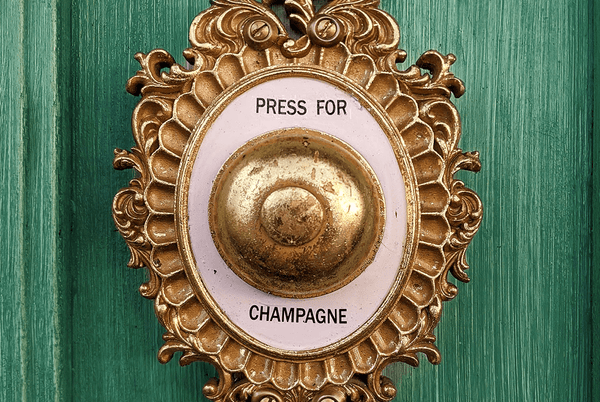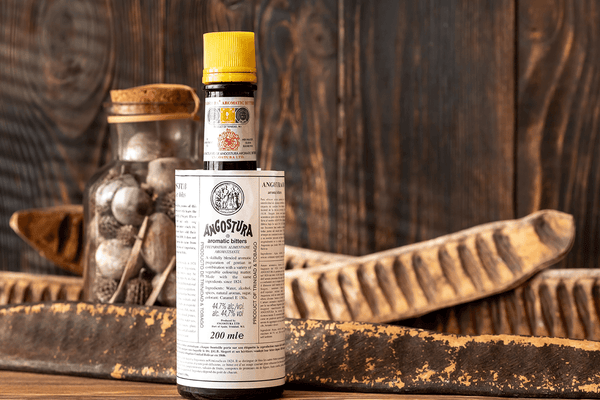HOW BOURBON IS MADE
By definition, the mash bill for bourbon is at least 51% corn. The prominence of this large grain in the mash bill is the reason for bourbon's characteristic sweetness compared to other types of whiskeys, and many distilleries opt to use a much larger proportion of this large grain — 70%, 80%, or even 90%...

Understanding how bourbon is made can increase appreciation for the craft of making bourbon, as well as expanding interest in trying new bourbon expressions.
Defined and regulated by federal law, bourbon is the national spirit of the United States, recognized by Congress as a distinctively American product. As such, bourbon must meet a specific set of requirements to be worthy of the name. From one way of looking at it, there's not a lot that goes into crafting a fine bourbon. It's essentially a handful of ingredients, a few steps, and a few years in the making. Every master distiller knows, however, that how you select and treat these ingredients and how you approach the craft make a tremendous difference in the final product.
With that in mind, if you've ever wondered about the steps involved in taking grain to glass, here's your chance to find out how bourbon is made.
Creating the Mash Bill
The process of making bourbon starts with the mash bill, the specific combination of grains that go into the recipe. Every distillery has its own mash bill, distinguishing its product from that of others. In fact, it's common for a distillery to have multiple mash bills, allowing it to experiment and create several brands of bourbon.
By definition, the mash bill for bourbon is at least 51% corn. The prominence of this large grain in the mash bill is the reason for bourbon's characteristic sweetness compared to other types of whiskeys, and many distilleries opt to use a much larger proportion of this large grain — 70%, 80%, or even 90%.
The remainder of bourbon's mash bill is a combination of the smaller grains of rye, malted barley, and wheat. The use of these grains stems more from tradition than law, and each added grain adds its own characteristic to the final product. Rye gives it a kind of peppery bite, barley adds toasted or nutty notes, and wheat imparts a kind of softness and an additional layer of earthy sweetness. The proportions of these smaller grains are up to the master distiller. Some bourbons may contain just one of these ingredients, while others may have all three in varying measures.
With the mash bill set, each of the grains gets ground on its own to separate it from its germ and husk and release its flavors. The grinding process typically produces particulates of grain, called grist, which maximizes the surface area and, therefore, the amount of flavor and sweetness extractable from it.
Malting
Malting is the process of steeping grain in water for several days and allowing it to germinate before drying. In the world of whiskey production, barley is the most common grain to undergo malting, but any grain is susceptible to this process.
The reason for malting is twofold. First, it causes the secretion of the enzyme amylase, which transforms the starches within the grain into fermentable sugars. The sugars later act as food for the yeast, resulting in the production of alcohol.
Second, malting influences the color, flavor, and body of the finished spirit. Un-malted grain is flavorful on its own, but the process of germination causes it to develop new, distinctive notes. Malted barley, for instance, has a nutty quality, while malted wheat contributes a degree of sweetness and a softer texture. A distiller may malt two or three grains in the mash bill to create a double- or triple-malt bourbon of greater complexity.
Cooking the Mash
With the mash bill set and the grains ground, it's time to start cooking. This begins with the introduction of a vital ingredient: water. The applicable laws don't specify what type of water to use, but the traditional choice is the mineral-rich limestone waters found in Kentucky. The idea is its alkalinity and minerals, especially the calcium and magnesium, allow the yeast to thrive. This type of water contains little to no iron, which can affect the taste and appearance of the liquor. That being said, the water often comes from various sources, including springs, lakes, and purified municipal supplies.
The grains in the mash bill require different cooking temperatures. Corn is the first to enter the mash house and commonly takes a temperature of 220 degrees Fahrenheit. After about half an hour, in goes the wheat or rye, which takes temperatures around 170 degrees Fahrenheit. The barley is last and takes the lowest temperature, around 150 degrees Fahrenheit.
Throughout the cooking process, paddles constantly stir and agitate the mixture. The cooking breaks down the starch into simple sugars that the yeast can later digest. Malted barley also contains enzymes that help to break down the complex carbohydrates of all the grains in the mash bill. If the mash bill doesn't include malted barley, the distiller may add enzymes to facilitate this process. Some distilleries cook the mash under pressure, which helps to reduce the overall cooking time.
Fermentation
Once the cooked mash has cooled, the whole thing, solids and all, transfer to a fermenter, where yeast gets added to the mix. Distillers commonly have yeast strains they've cultivated for generations. Often, a single distillery has multiple strains of yeast, each applied in the production of a different bourbon. The addition of yeast initiates the fermentation process, through which alcohol and various flavor characteristics arise.
Another addition that most, if not all, distilleries use at this stage is sour mash — the mash left over from an earlier distillation. The addition of sour mash reduces the pH of the mash, creating a less hospitable environment for bacteria and a more conductive arrangement for the yeast to thrive. The fermentation process usually spans a few days, producing an aromatic beer with about 9% alcohol by volume.
Distillation
Fully fermented, the beer is a combination of solids and ethanol. This enters the distillation stage — the process of vaporizing the liquid and collecting it as condensation. Most distillers carry out two distillations. The first takes place in a column still, and the second takes place in a copper pot still, directly heated. The resulting distillate is raw whiskey, known as white dog, sometimes sold as is in stores. The distiller tastes the white dog and dilutes it to ensure the appropriate alcohol content before aging. By definition, bourbon cannot enter the barrels at an ABV higher than 62.5%.
Aging
Per the regulations governing bourbon production, the oak barrels used in the aging process must be new and charred. This means they haven't previously contained any spirit and their insides have been treated with fire, creating layers of caramelized wood sugar and charcoal. Once inside the barrels, the whiskey must age for at least two years to qualify as straight bourbon.
During this time, the interaction between the liquid and the charred wood causes the spirit to undergo chemical reactions that impart flavors such as smoke, caramel, vanilla, and spice and cause acid compounds to take on more pleasant characteristics. The wood also filters the spirit, and the porous nature of the wood allows for evaporation, both of which affect the flavor and characteristics of the bourbon.
Once the bourbon has reached the intended level of maturity, it leaves its charred oak containment a transformed spirit. From there, it enters bottles that eventually line the shelves of stores. After a long series of mixtures, movements, and conversions, the bourbon is finally ready to be enjoyed as you like it.






